- How is Coronavirus Spread?
- How Many People Have Died From Coronavirus?
- How to Prepare for the Coronavirus
1.What is the Coronavirus or COVID-19?
Corona means crown in Latin, thus, the crown-like spikes on the surface of the virus lend to its name, “coronavirus.” Coronavirus, also known as COVID-19, is a respiratory illness that is spread through close contact, most likely by droplets within 6- feet, and can lead to severe cases of pneumonia. Pneumonia is responsible for over 2.5 million deaths annually. Although currently much is unknown about the COVID-19, according to the World Health Organization, the most vulnerable appear to be the elderly and people with preexisting health conditions. The symptoms of coronavirus are fever, coughing, and shortness of breath. Treatments and vaccines are not yet available.

2. How Did the Coronavirus Get Started?
COVID-19 or Coronavirus 2019 is not the first coronavirus to infect people. Among the most recent zoonotic diseases, or diseases that are transmitted from animals-to-humans, are Severe Acute Respiratory Syndrome (SARS) and Middle East Respiratory Syndrome (MERS). These viruses began in animals, transferred to people, and mutated creating illness among humans, just as the new Coronavirus or COVID-19, although the exact source is not yet known.
a. SARS-CoV
The 2003 outbreak of SARS-CoV, which has largely been eradicated from the human population, originated in civet cats, a wild, exotic animal considered a delicacy in southern China. It infected nearly 10,000 people globally and killed 1,000.
b. MERS-CoV
MERS-CoV began in Saudi Arabia in 2012 and was spread by camels, possibly through drinking raw camel milk or eating camel meat before passing to humans. While the civet cat trade was banned along with consumption, the dromedary camel, and intermediary of MERS-CoV, provide wool, transportation, and food, making the elimination of camels unlikely. As of January 2020, MERS-CoV reported deaths total 862 out of a reported 2,506 to the WHO.


c. Coronavirus or COVID-19
In December 2019, cases of pneumonia appeared in clusters around the city of Wuhan, China. The outbreak was traced to Huanan Seafood Wholesale Market where snakes, porcupines, deer, raccoon dogs, skinned birds, and other wild, exotic animals were sold for consumption. The Coronavirus or COVID-19 disease has since spread to over 101 countries, including the United States.


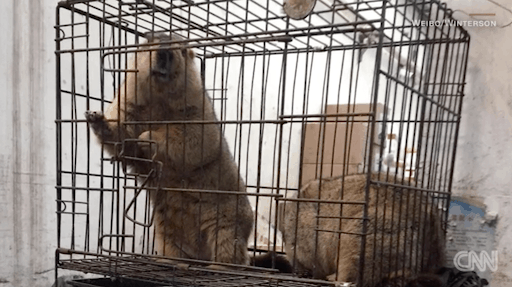
3. How is Coronavirus Spread?
The CDC reports COVID-19 is believed to be spread from person-to-person. Close contact with an infected person can possibly spread the virus through droplets from coughing or sneezing. When these droplets settle onto the mouth or nose or are inhaled into the lungs, a person can become infected. Although some may be contagious without showing symptoms, most reports have come from people showing symptoms.
It is also possible there may be spread from contact with surfaces and objects that are contaminated. A person would need to touch the mouth, nose or eyes to become infected, however, this is not thought to be the main method of transmission. COVID-19 appears to be easily spread but has not to date reached community spread in Texas.
According to the CDC, community spread means the virus has spread in a community but it is unknown how.
4. How Many People Have Died From Coronavirus?
The Coronavirus or COVID-19 disease can lead to pneumonia, organ failure, and in extreme cases, death. Although the spread is happening faster than most recent coronaviruses, the case fatality rate (CFR) of COVID-19 is believed to be around 3.4%, which is significantly lower than SARS (9.6%) and MERS (35%).
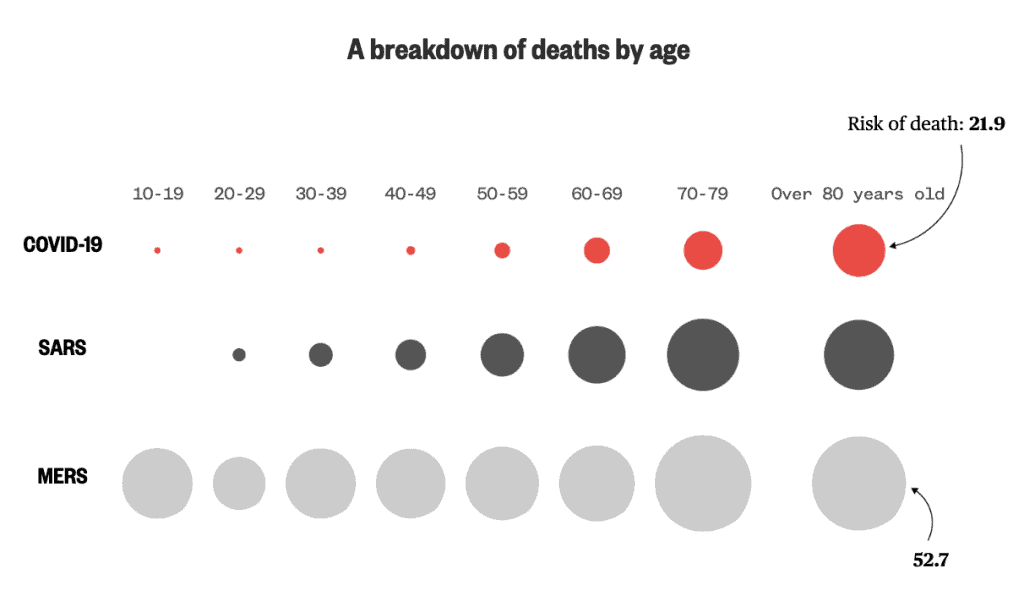
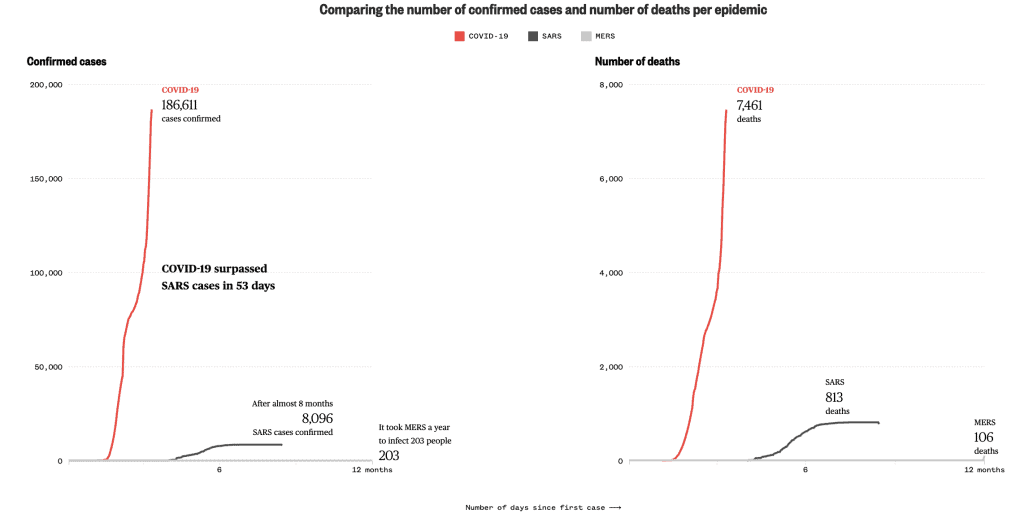
According to Johns Hopkins CSSE, over 200,000 cases of coronavirus have been confirmed in 156 countries and territories. 118 of 7,769 confirmed cases of coronavirus in the United States have been fatal. 3 deaths have occurred in Texas.
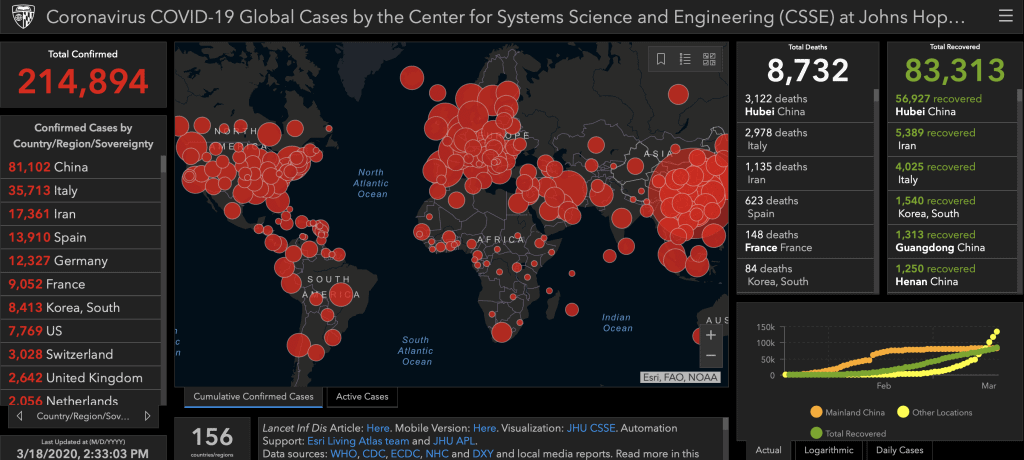
5. How To Prepare for the Coronavirus
On March 6, President Trump signed an $8.3 billion coronavirus emergency response package that will go towards therapeutic development, vaccine development, additional supplies purchases like masks and personal protective equipment. $100 million will be directed to under-served groups at community health centers.
It will likely take longer than a year to find a vaccine for COVID-19, but there are things you can do today to help prepare for the Coronavirus.
Wearing a mask in public if you are not sick yourself or severely immunocompromised is discouraged, as these resources will be taken from healthcare professionals who need it.
Several major events and meetings have been canceled to discourage gatherings that may lead to community spread, meaning there is still potential to contain or slow the spread and keep hospitals from overloading in the United States.
In China, cases are dropping, which is considered by all members of the health care world to be encouraging, good news.
Although there is much that we do not know about the virus, there are precautions that the public can take that include:
- Hand washing or using hand sanitizer if soap and water are not available
- Fist bumping instead of shaking hands
- Avoiding close contact with people who cough or sneeze
- Bringing wipes to the gym. It’s not the sweat you’re seeking to eliminate from high-contact surfaces but the potential germs of the virus from doorknobs, barbells, glass, metal, and plastic.
- Stay home if you’re sick.
Every year, seasonal influenza kills tens of thousands of people and infects millions every year. In 2019, there were 16,000 flu-related deaths and 280,000 hospitalizations. The flu virus is even less discriminatory than COVID-19, which appears to favor elderly and immunocompromised individuals, yet, less than half of the American population receives the flu vaccine.
Set your appointment to get a flu vaccine at Direct Med Clinic today!

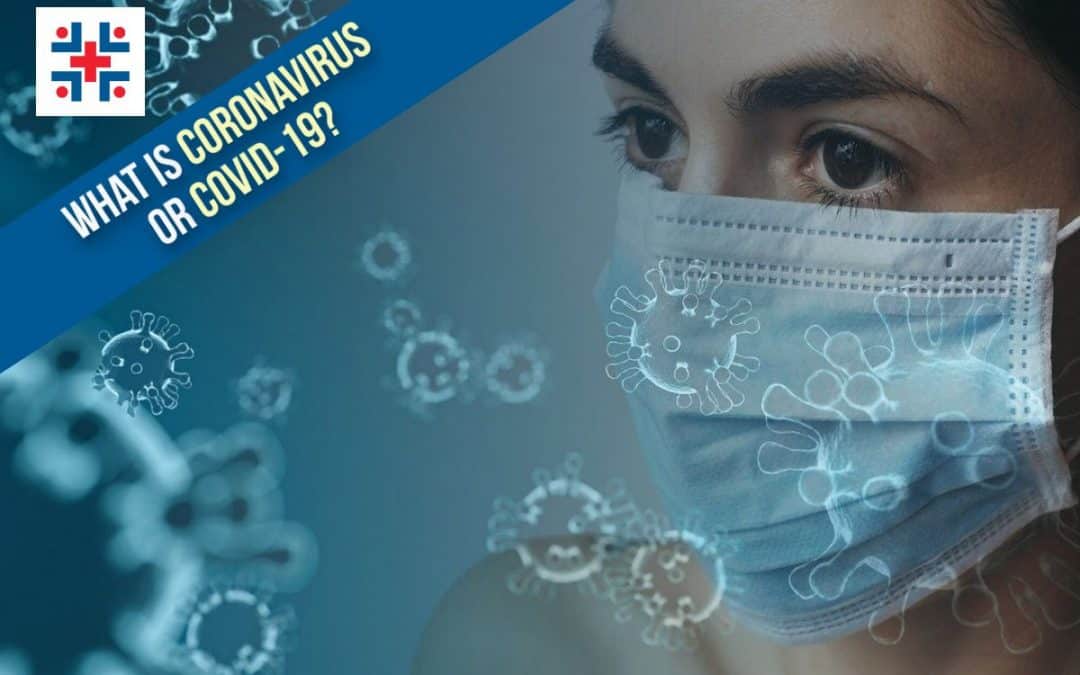
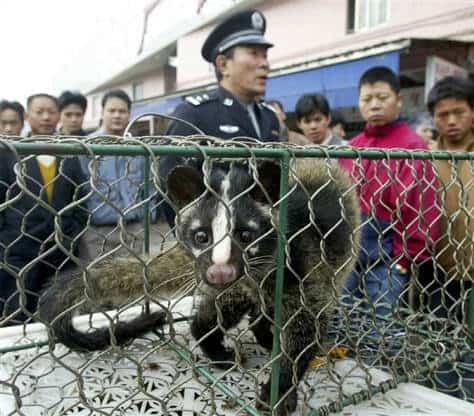
Recent Comments